Rincón de la Vieja National Park: What to do? Where to stay?
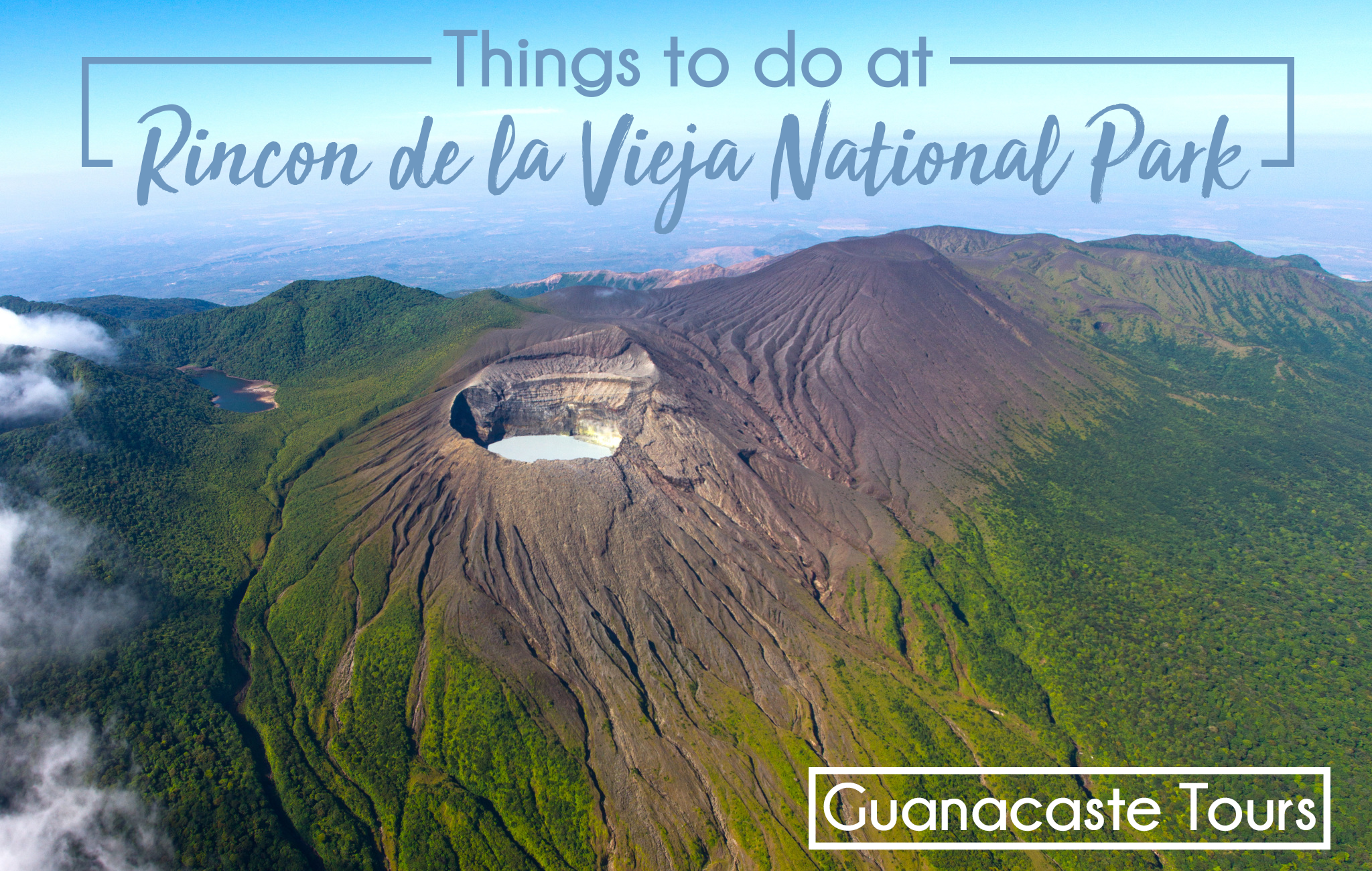

The Rincón de la Vieja Volcano and National Park is a visually dramatic landscape that is home to an extraordinary variety of life. This area is a big part of Costa Rica’s natural biodiversity. The name Rincón de la Vieja translates from Spanish to ‘Old Woman’s Corner’, a reference to a local legend about a girl whose lover was thrown into the volcano’s crater by her father. The woman became a recluse living on the mountain, gaining a reputation for her incredible healing powers. This name alludes to the natural wonders offered by this majestic volcano, which juts out of the Guanacaste landscape, calling passersby to visit and be healed.
About the Rincón de la Vieja Volcano
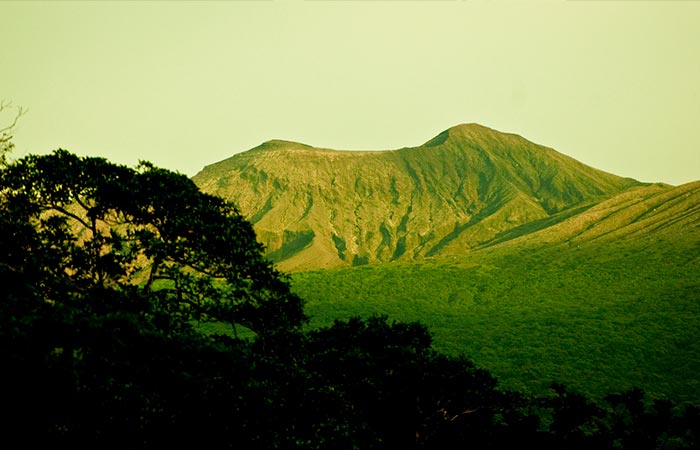
Sensoria platform view of Rincón de la Vieja Volcano
Rincón de la Vieja is the largest and most active volcano in Guanacaste and one of the five major volcanoes in Costa Rica. At 6,286 feet (1,916 m) and 9 miles wide (15 km), it is locally referred to as the ‘Colossus of Guanacaste’. It is a 600,000 year old geological wonder with at least nine volcanic craters and 32 rivers descending its massive body. It bridges the continental divide and is one of the most active volcanoes in this region of the Pacific Ring of Fire.
The impressive Rincón de la Vieja Volcano and its dormant sister, Santa María Volcano, form the center of the Rincón de la Vieja National Park — part of the UNESCO World Heritage Site of the Guanacaste Conservation Area. Located 15.5 miles (25 km) northeast of Liberia in Guanacaste, Costa Rica, the Rincón de la Vieja National Park has 31,530 acres which are split into two sectors: Las Pailas and Santa María, the more popular of which is Las Pailas.
Las Pailas translates to “The Cauldrons” in Spanish, accurately describing the spectacular displays of geothermal energy being emitted in this region. Steaming fumaroles, mini geysers, bubbling volcanic mud pits, natural hot springs and jungle waterfalls are all featured on this dynamic landscape. This is a volcanic experience like no other in Costa Rica.
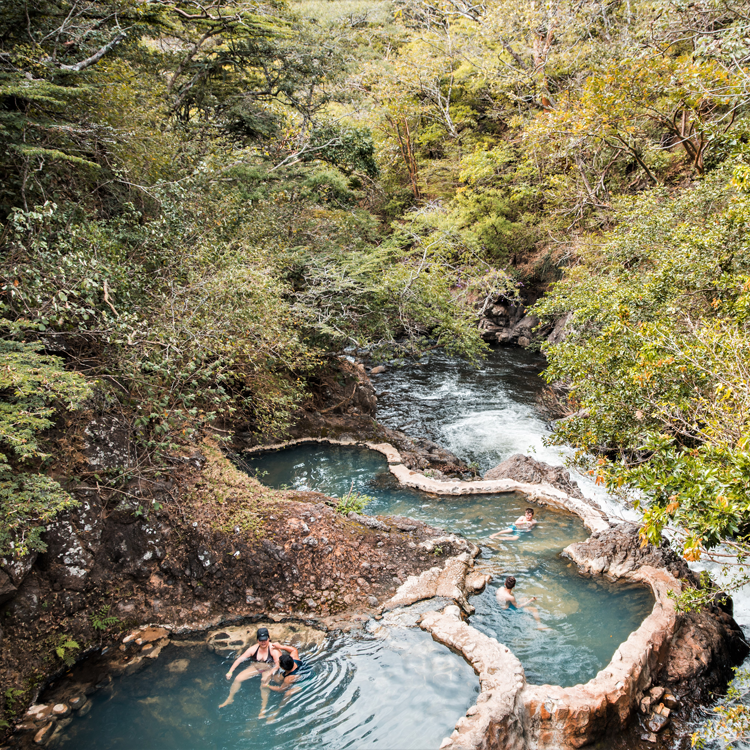
Rio Negro hot springs at Hacienda Guachipelin — the gateway to Rincón de la Vieja National Park
As of September 22, 2011, access to the highest crater and lagoon is no longer open to the public after a 160m lava and ash eruption on September 16th of that year. The most recent eruptions occurred in May and June of 2017 and the volcano continues to be one of the most active in Costa Rica.
The generating potential of the Rincón de la Vieja Volcano is around 140 megawatts, but the area is protected from excessive testing. But in 2013, as a part of Costa Rica’s mandate to maintain close to 100% renewable energy usage, the Las Pailas Geothermal Power Plant was extended to be able to generate 55 megawatts, powering up to 200,000 homes in the region.
About the UNESCO Guanacaste Conservation Area
The Rincón de la Vieja National Park has been a part of the UNESCO Guanacaste Conservation Area since 1999. This area encompasses 147,000 hectares of land and sea in the north-west region of Costa Rica. Various ecological zones can be found within this conservation area that create a mosaic of diverse ecosystems. The many forest types that comprise this region include extensive wetlands, mangroves, cloud forests, lowland rainforest oak forests, savannah, and the rare tropical dry forest. This region contains the best dry forest example in Central America. These rare ecosystems provide homes to a number of endangered or rare plant and animal species that inhabit this region.
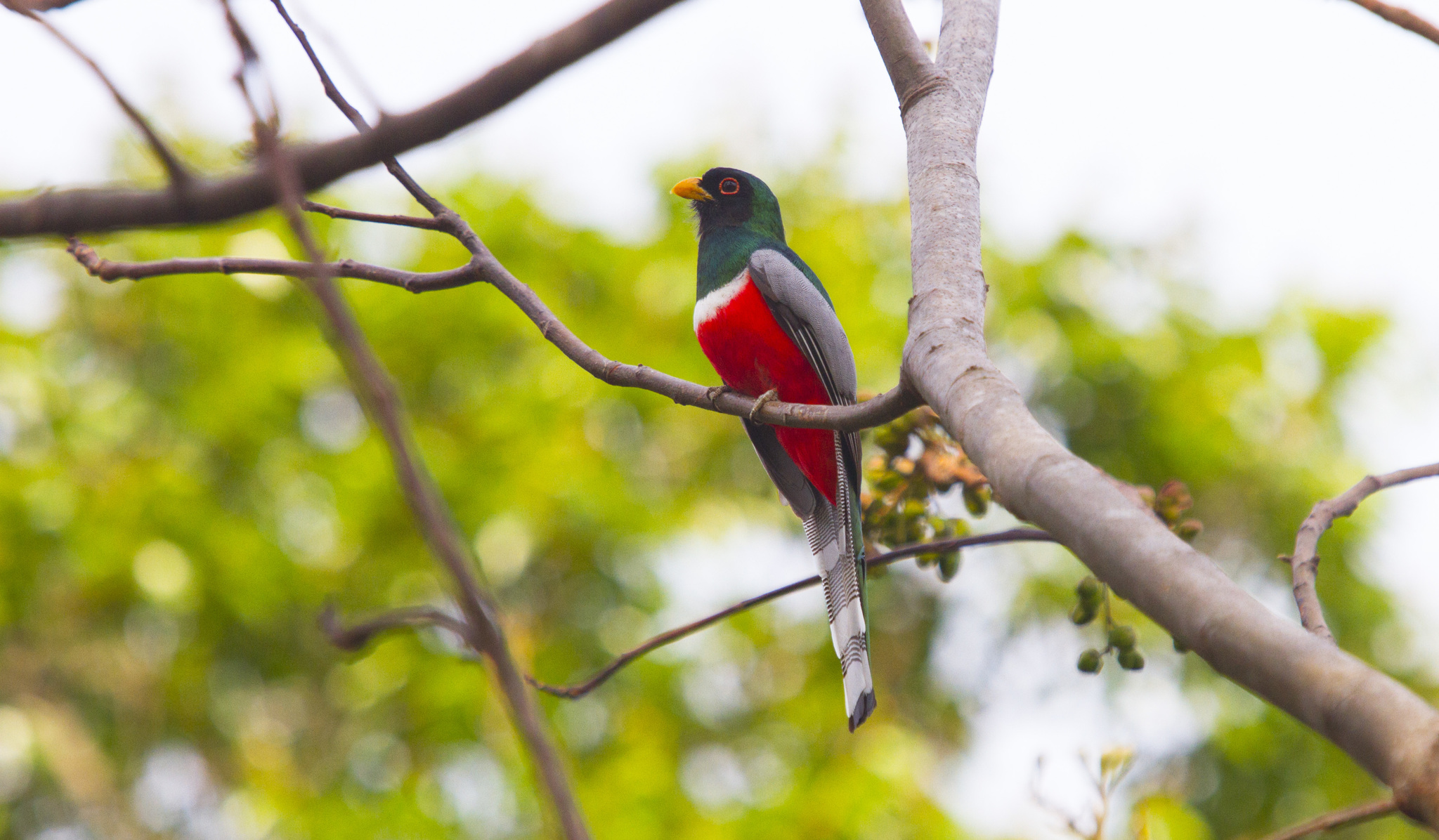
Male collared trogon in the tropical dry forest at Hacienda Guachipelin
In the whole of the Guanacaste Conservation Area, there are around 7000 plant species and more than 900 vertebrate species confirmed to inhabit this region of Costa Rica. Five hundred species of birds are among these numbers, including the endangered Great Green Macaw.
The marine-coastal region of the UNESCO Guanacaste Conservation Area features 43,000 hectares of estuaries, near-shore islands and sandy and cobble beaches. Nutrient-rich, cold offshore currents bring a huge amount of biodiversity to these Pacific shores, including turtle nesting sites and Humpback whale breeding grounds.
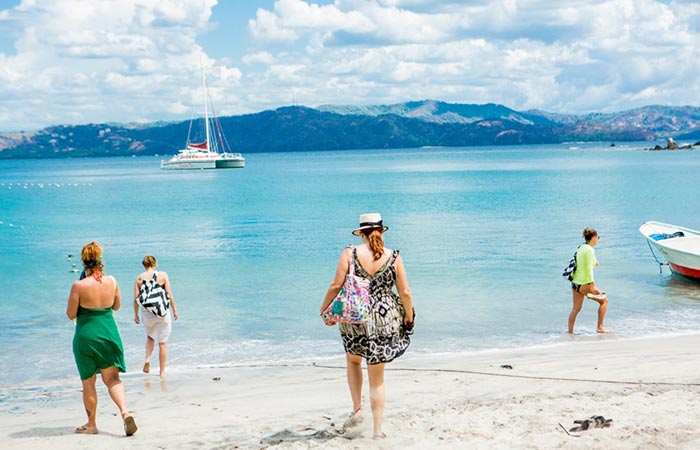
The pristine beaches of Guanacaste are rich in biodiversity
The Guanacaste Conservation Area is comprised of contiguous protected areas that continue to expand over time. Thanks to Costa Rica’s strong environmental policies, new tracts of land continue to be added to this conservation complex. The history of this conservation area dates back to 1971 and the creation of the Santa Rosa National Park. Over the years, new parks and refuges have been established and added to this nationally protected corridor. Entrance fees to the Rincón de la Vieja National Park contribute towards funding the park’s services and expansion.
What to do at Rincón de la Vieja National Park
Rincón de la Vieja National Park’s massive size allows visitors to experience both the Caribbean and Pacific sides of the Cordillera de Guanacaste. The west side of the park is more arid and has the better hiking conditions. Atlantic trade winds on the eastern side create conditions for an average of 200 inches of rain annually. This means lush, fertile vegetation and virgin territory. One of the most popular trails at the park, the Las Pailas loop, is a 2.5 miles (3.5 km) hike from lowland rainforest to exotic dry tropical forest. During this hike, you will see an immense variety of biodiversity due to the multitude of microclimates you will encounter.
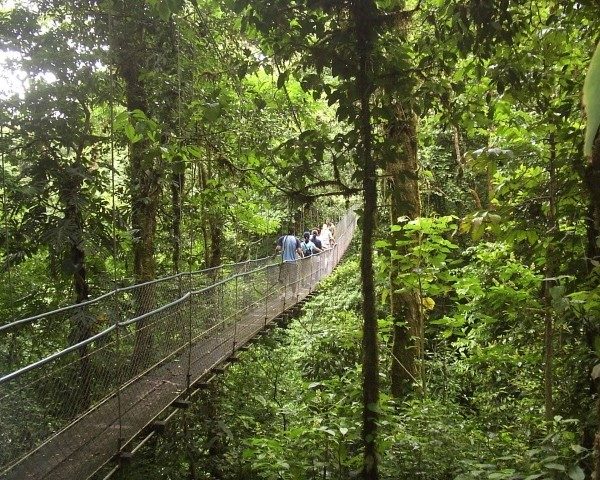
Sturdy eco-bridges hang in certain places for safer crossings for hikers and nature
The excitement of volcanic activity attracts all kinds of exotic wildlife species to this unique region. In the whole of the Rincón de la Vieja National Park, you can potentially encounter 300 different species of bird, including blue crowned motmots or turquoise motmots (two of the visitor favorites and the national bird of nearby Nicaragua). Or, you might likely encounter a troupe of white faced monkeys or howler monkeys. Or if you’re really lucky, a family of spider monkeys might chirpingly pass you by. Massive species of trees like Laurel and Guanacaste host many bird and mammal species in their canopies.
Pumas, jaguar, tapirs, coatis, kinkajous and sloths are some of the other more elusive but thriving mammal species in this protected area. The incredibly diverse plant life in this varied region provides abundant shelter and food for these mammals to prosper. It is a special and privileged experience to be able to encounter so many exotic species in one place and it is thanks to this massive volcano’s remarkable landscape.

Breathtaking nature in Guanacaste is home to a remarkable array of wildlife at Sensoria Land of Senses
Take in the area’s spectacular ecology from a wide variety of adventure or relaxation experiences. Several lodges, resorts and hotels in the area offer hiking, forest canopy tours, river-rafting, rock climbing and more. Hotel Hacienda Guachipelin sits at the gateway to the Las Pailas entrance to the Rincón de la Vieja National Park. It is a great place to begin your immersion into nature.
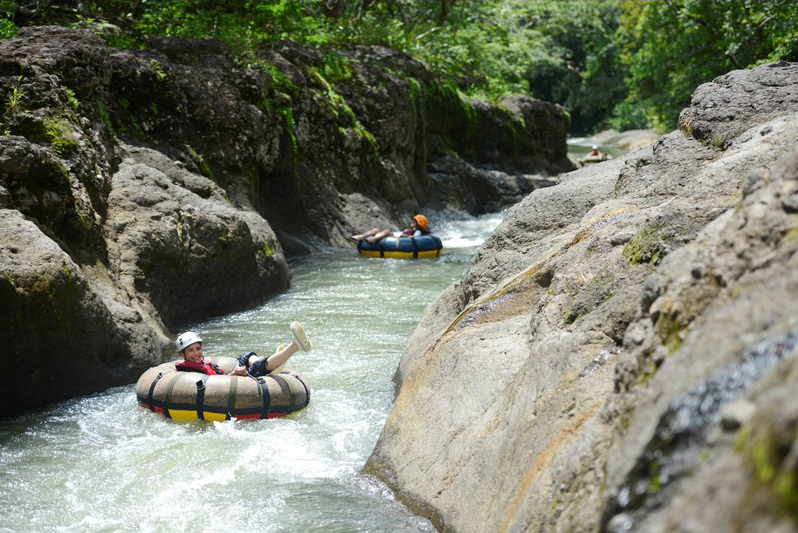
River tubing is one of the most exhilarating activities at Hacienda Guachipelin
Want to learn about bird or plant species in the area? How about a thrilling and exhilaratingly beautiful ride down a pristine river in an inflatable tube? The tour providers in this area know how lucky they are to be in such a special area and they do their best to honor each visitor with the best experiences to take in the best of what Costa Rican nature has to offer. Freshwater lagoons, waterfalls, hot springs and boiling mud pits… the Rincón de la Vieja Volcano has it all!
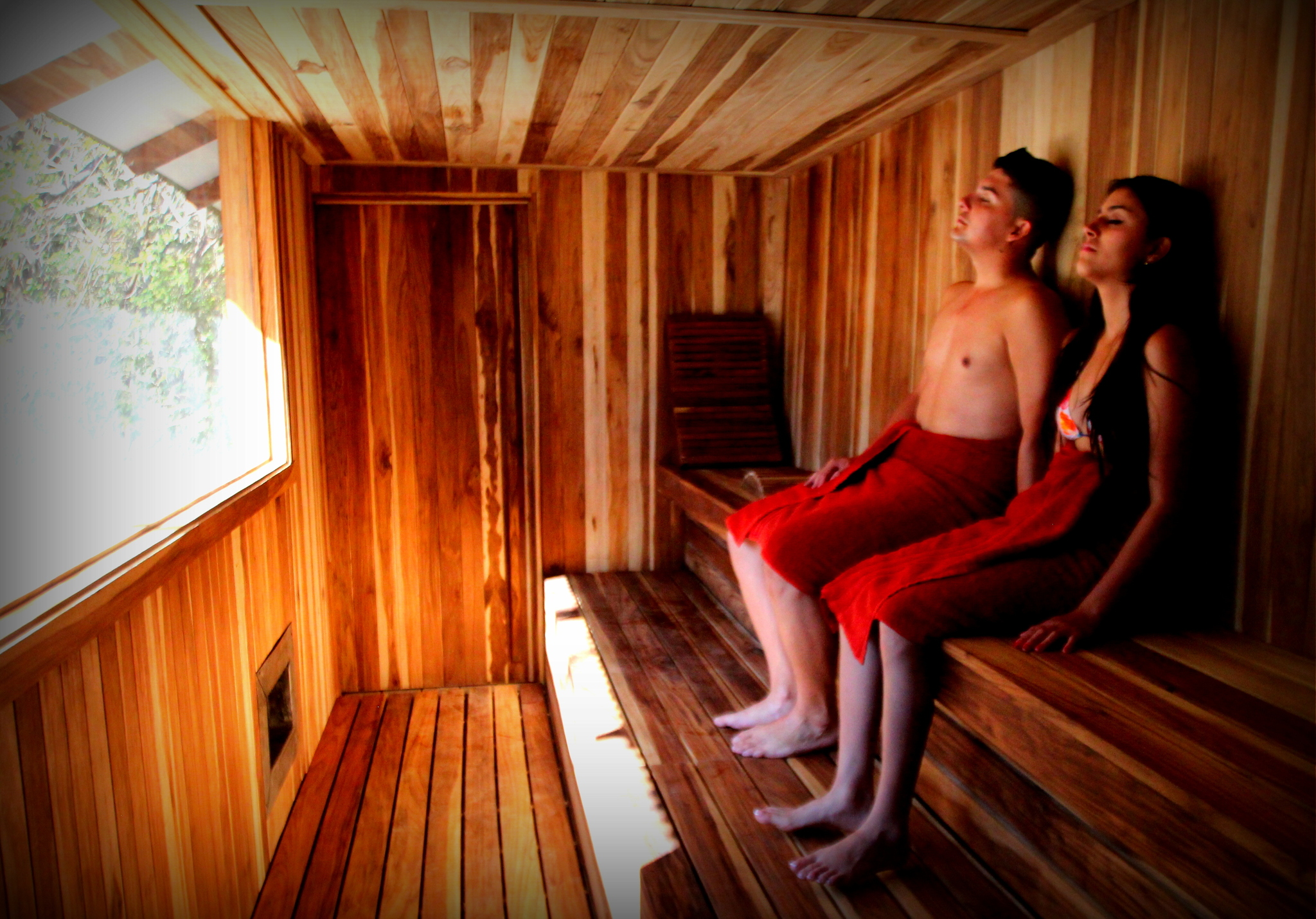
Head to the sauna at Simbiosis Spa, then soak in a natural sulfuric hot spring and finally head for a refreshing dip in a cool, fresh waterfall or stream — all in one afternoon!
